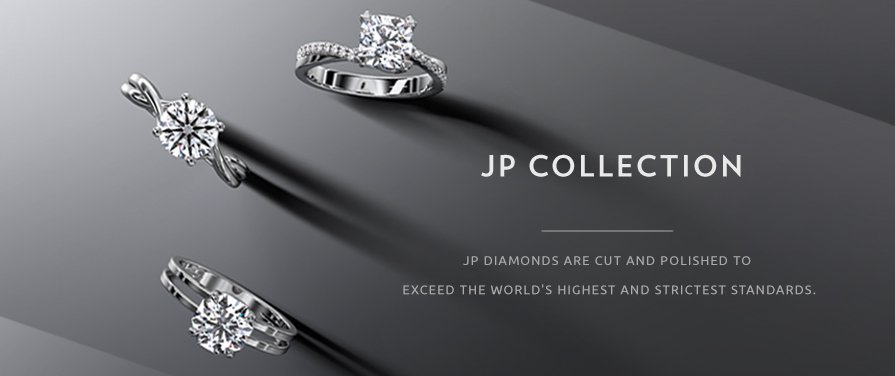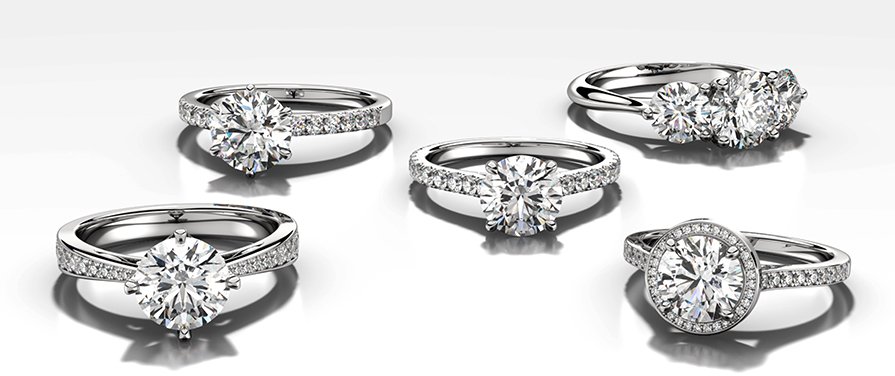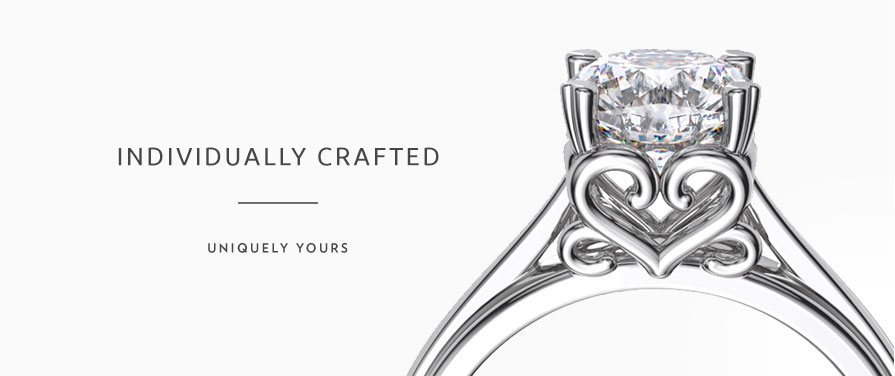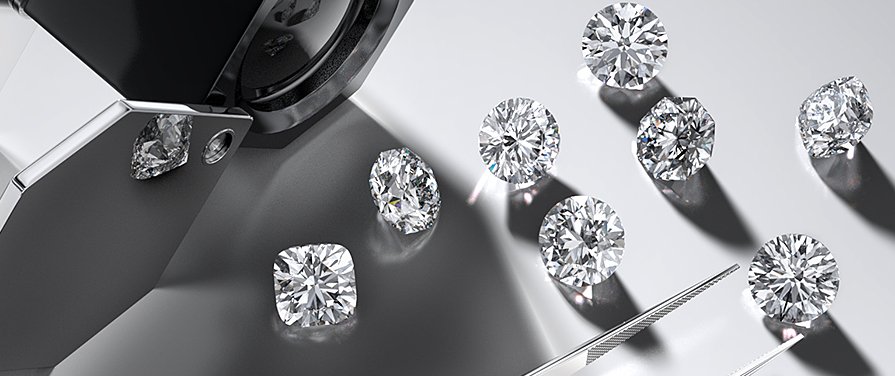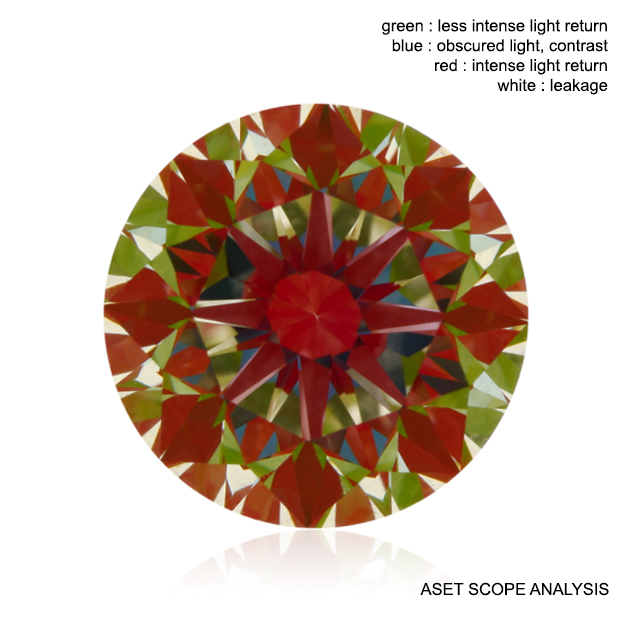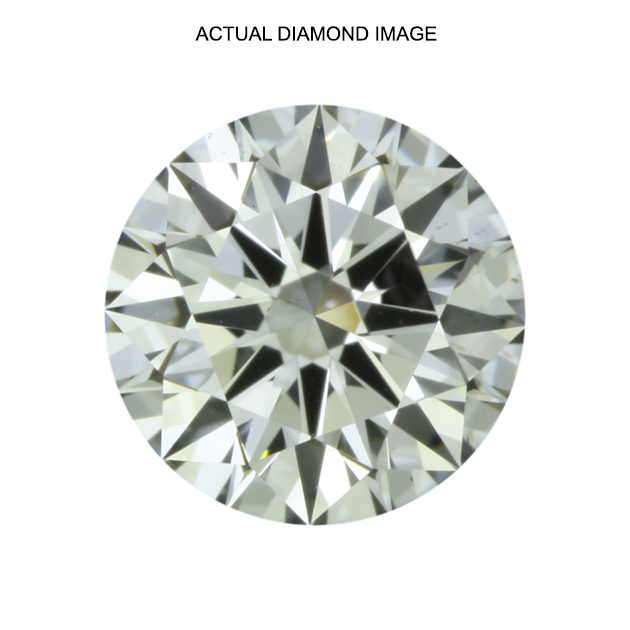HCA Score Calculator Tool
Introduction to the HCA tool
HCA is the short abbreviation for The Holloway Cut Advisor (U.S Patent 7,251,619), invented by Garry Holloway. The HCA calculator is used to estimate a round diamond’s appeal based on its potential Light Return, Fire, Scintillation and Spread, in other words, to estimate the effectiveness of light return from a diamond’s cut. This HCA tool is wonderful not just because it can estimate a diamond’s appeal, but because it is easy and free to use!
How to use the HCA calculator
The HCA is designed to aid a novice consumer or an experienced trade buyer in selecting diamonds they have not seen. To get a diamond’s HCA score, you need to input the figures for Total Depth %, Table %, the diamond’s Crown degree
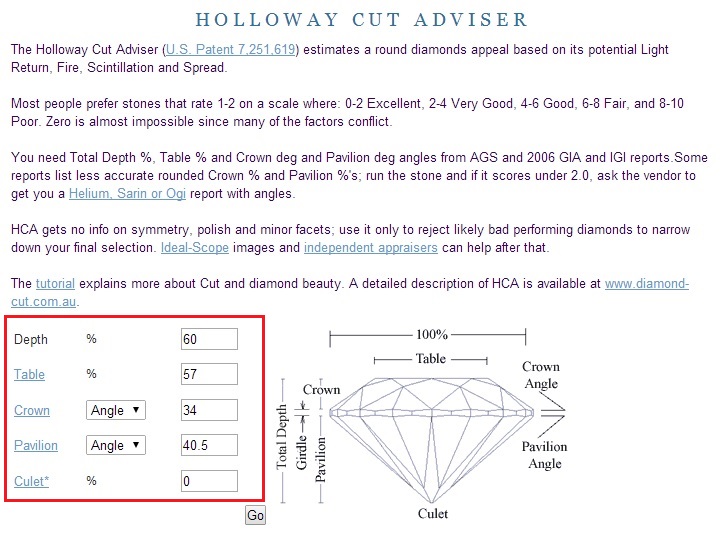
It is best to input Crown and Pavilion angles instead of percentages because percentages are often rounded; for example, a 13.3% can be rounded off to 13%. Likewise, some certificates
You will be able to find the proportions of your diamond on its certificate.

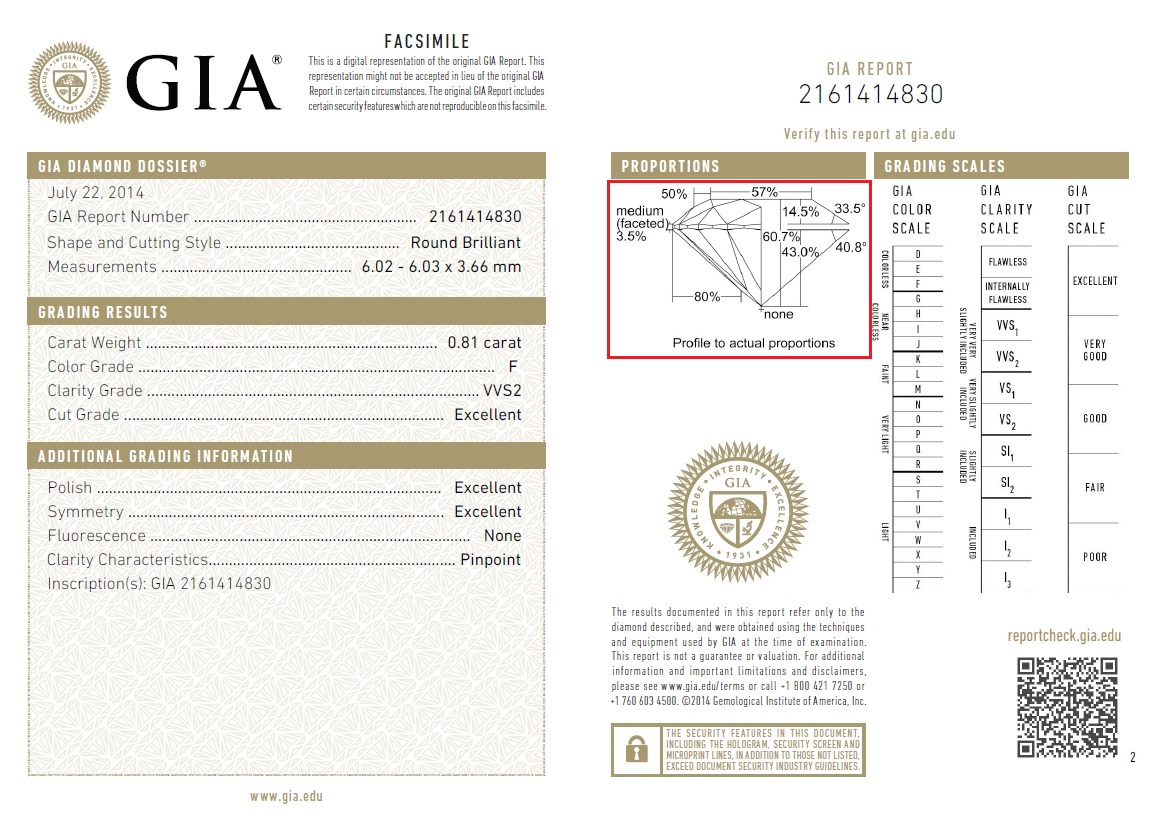
From the diagram, you will find the proportions to input into the HCA tool as labelled below. Once you have keys in all the values and click “go”, it will show you the result page.
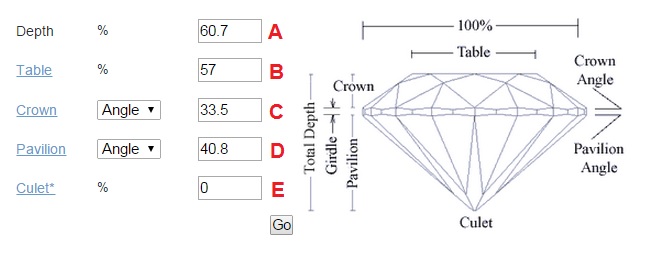
HCA Diamond Score Result
After inputting the diamond specifications in the formula provided, you will receive
A score under 2 (Excellent) means you have eliminated known poor performers, which is more than 95% of all diamonds. Most people prefer diamonds that rate 1-2 on the scale where: 0-2 Excellent, 2-4 Very Good, 4-6 Good, 6-8 Fair, and 8-10 Poor. Zero is almost impossible because of conflicting factors; you may prefer a diamond with an HCA score of 1.5 to one with a lower HCA score of 0.5.
The Ideal range of diamonds is 1% of the worlds’ diamond supply and here at JANNPAUL, all diamonds go through a stringent process of filtration. To ensure and maintain this standard of quality to customers, we only accept and stock diamonds with
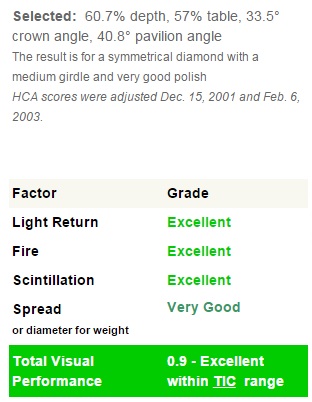
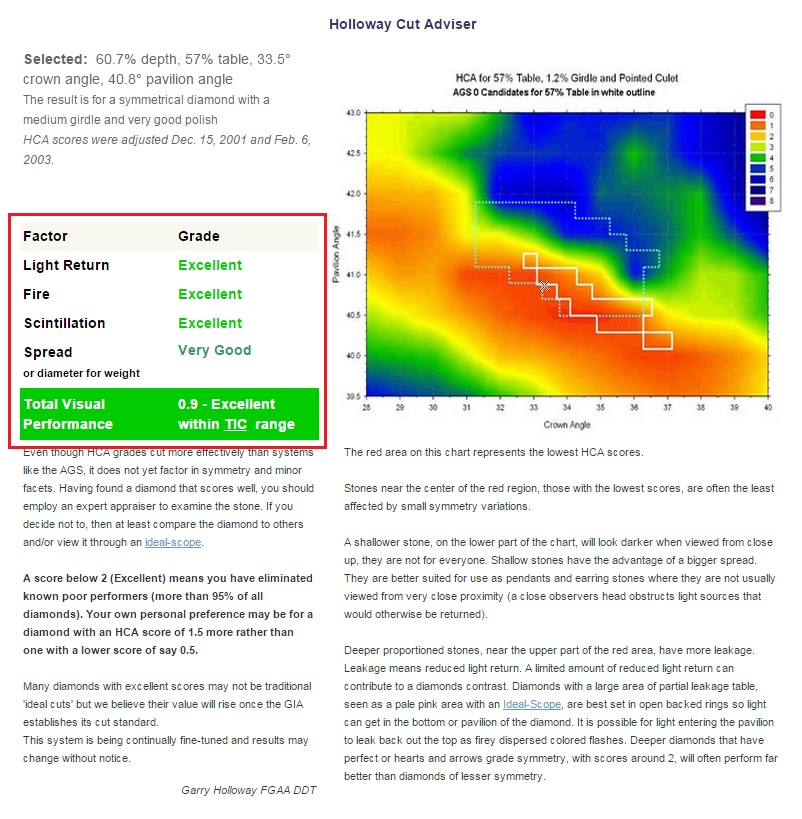
The HCA tool categorizes the light performance of the diamond into 4 different factors.
Light Return – Measures the brightness of the diamond. The stronger the light return, the brighter your diamond will be. This can be analyzed in more detail with the
Fire – The variety of
Scintillation – The movement of fire and intense sparkles when you move your diamond. Often referred to as the “dance of fire”, a more scintillating diamond would have more rapid and even flashes of intense
Spread – This refers to the perceived size from the top view of the diamond. The wider the diamond, the larger it will appear, and hence, the spread will be considered better. However, a diamond that is cut too wide will have more light leakages, reducing its light return, fire and scintillation. As a result, the spread has an inverse relationship with
The HCA tool does have its limitations in its analysis and results, which we will share later.
Color Zones
On the
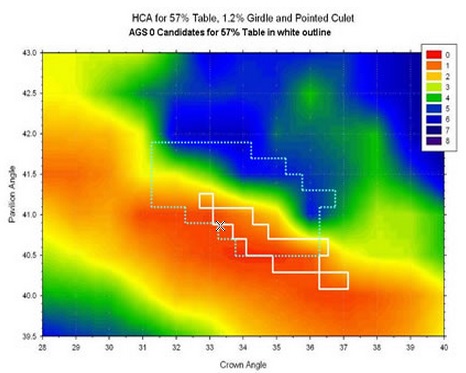
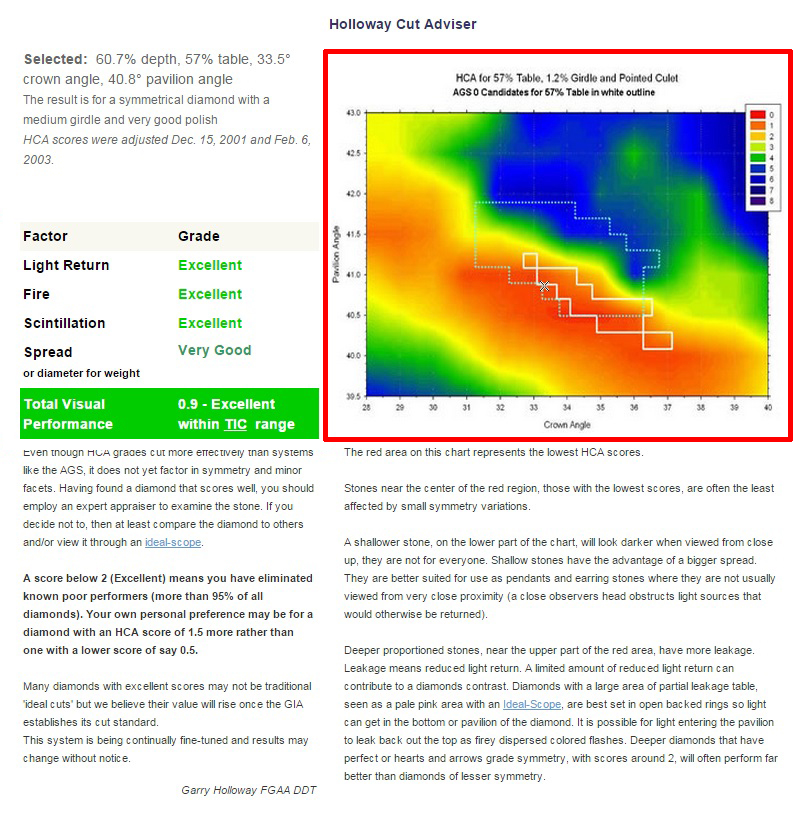
The result of your diamond will be marked “X” on the
The red area on the chart represents the better performing diamonds with the lowest HCA scores, while the blue to green areas
The area within the dotted lines is where a GIA certified Excellent cut graded diamond can fall within. The area within the uniform white line is where an AGS certified Ideal(0) cut graded diamond can fall within.
The “X” mark (on the Color Zone Chart) of the diamond we used falls within the dotted and white line areas. This would mean that this GIA certified diamond, can also be within the AGS Ideal (0) cut
For JannPaul Super Ideal Cut range, they will always fall within the shared area of both the dotted and white line areas.
Diamond with a low HCA score
From the same sample diamond that we used earlier, it has a low HCA score of 0.9. Below shows the Actual images and ASET scope image of the diamond.

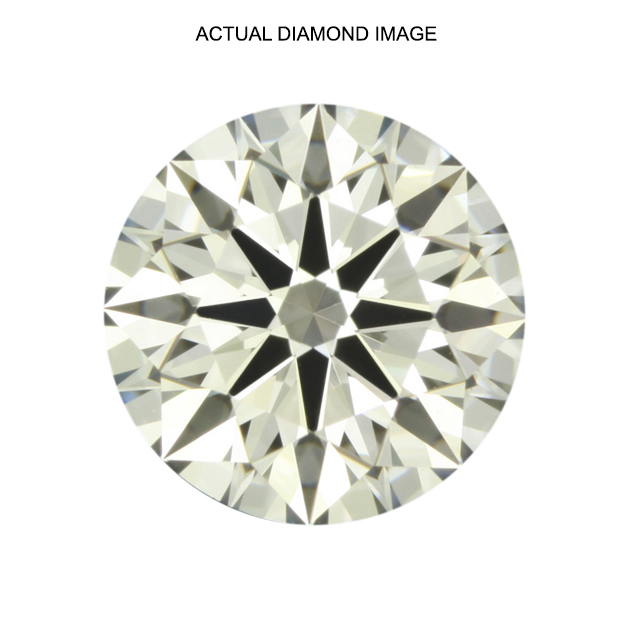
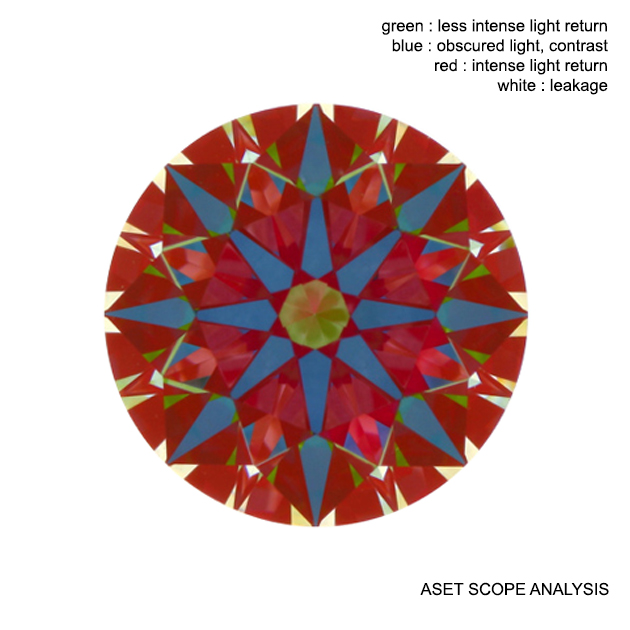
The ASET scopes
Diamond with a high HCA score
A diamond with a high HCA score means that the proportions of the diamond are cut poorly. A diamond with poor proportions will result in low brilliance.
Below is an example of a diamond which achieves a high HCA
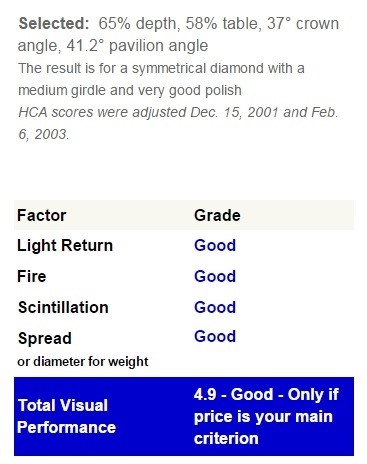
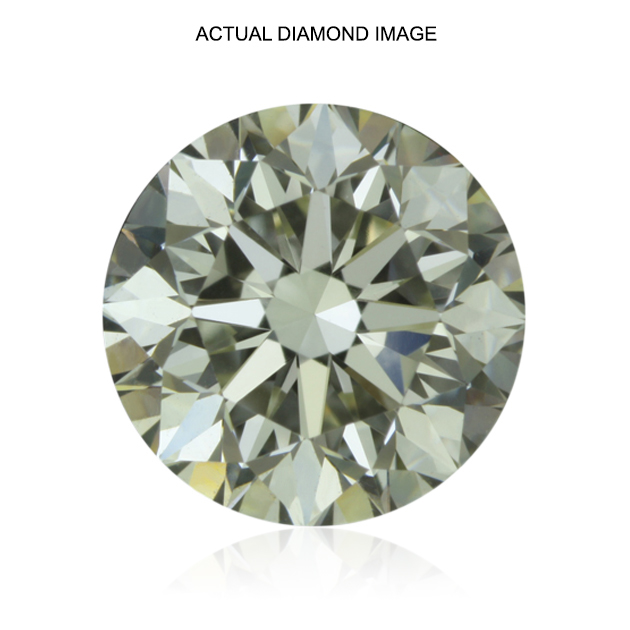
From the ASET scope images, the diamond can be interpreted with having severe light leakages,
Poorly cut diamond with a low HCA score
The HCA tool gives very good information if your diamond is cut proportionally. However, it is possible for a poorly cut diamond to achieve a low HCA score result.
Below shows a diamond with an excellent HCA score result. However, under the ASET scope, it shows an area of light leakages on the table of the diamond. One of the factors that the HCA tool fails to take into account is a diamond’s symmetry. As such, unsymmetrically cut diamonds may have pockets of light leakages, which will result in dark patches in the diamond.
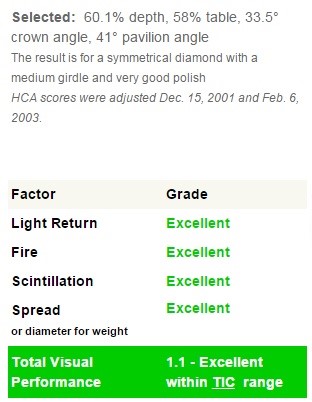
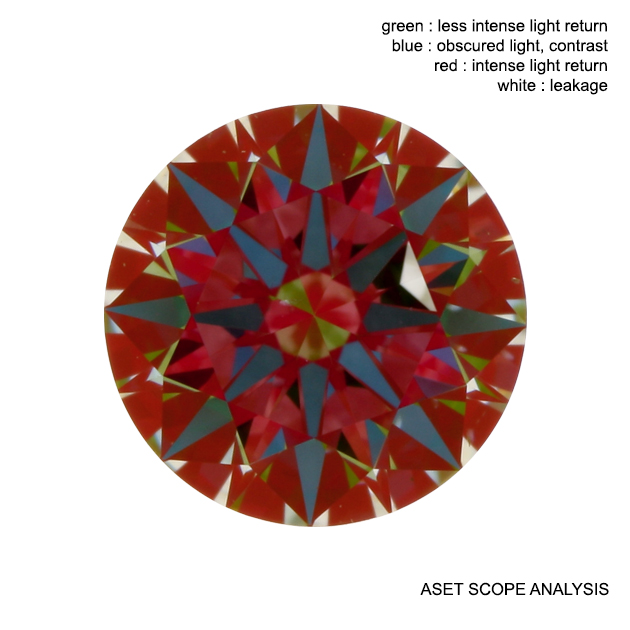
Limitations
Although the HCA is wonderful for calculating the effectiveness of light return in a diamond, we must stress that there are limitations to the HCA as well.
As Garry Holloway himself, stated, “Never use the Holloway Cut Advisor as your single decision maker to buy a diamond, but you can use it to reject a diamond when it has bad HCA results. You are using it to narrow your selection, not to choose your final stone.”
Why?
- The HCA tool ignores a diamond’s optical symmetry.
- It only takes into accounts 17 out of a diamonds 57 facets. Thus, it only measures 30% of a diamond’s facets!
- The 17 facets that it uses are only average values obtained from the certificate usually.
- It does not take into account extreme angles where it
- It does not detect painted or
- The HCA tool is only a prediction tool and it does not provide a live analysis of the actual diamond.
- A diamond with a low HCA score does not guarantee a high performing diamond.
In this video below, we showed a poor performing diamond with a lower HCA score.
Conclusion
Therefore, the HCA tool should only be used to eliminate diamonds with a high HCA score but not used as a selection tool. Diamonds with low HCA scores must be further analysed with the scopes.
A good analogy is that the HCA tool is similar to a poison detector. It is only able to detect which food is poisonous but is unable to tell you which food is delicious. Thus, after using the HCA (poison detector) to reject poisonous food (poorly cut diamonds), you will need to use your taste buds (scopes) to determine if food is delicious.
The HCA tool is available at, pricescope.com or idea-scope.com






